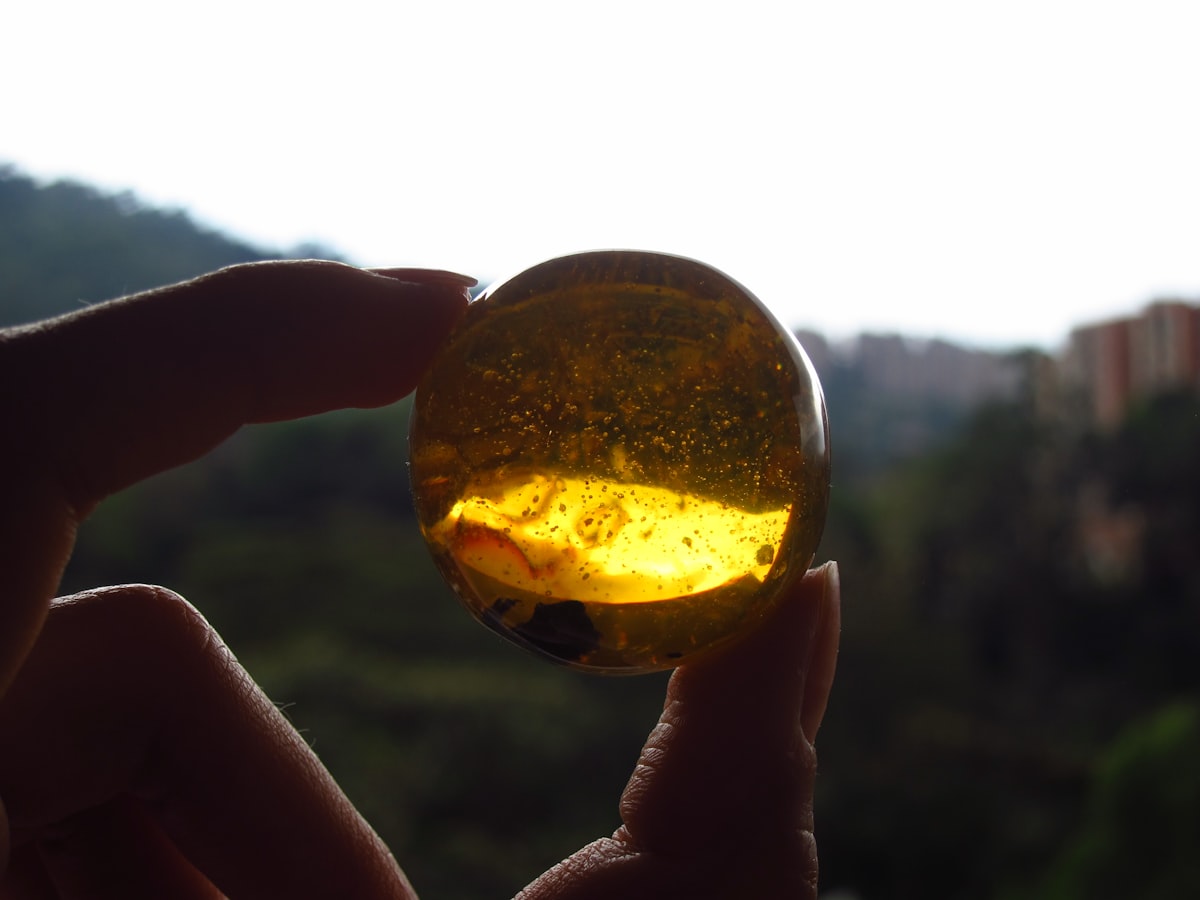Amber

Amber – Amber has enchanted humanity for at least 10,000 years. From the Mycenaeans to the Mayans, amber has been considered sacred and used by cultures across time on nearly every continent.
It was believed by some, that if one wore amber, no harm could befall them.
In particular, amber was believed to protect the throat from all ailments, and also ward off erysipelas (also known as St. Anthony's fire, a bacterial skin infection caused by streptococcus pyogenes, the same bacteria responsible for strep-throat).
A single amber bead worn was thought to remove chaff from the eye. It's eye powers go further in Scotland, especially in Argyllshire, were wearing four beads of amber was used as a cure for blindness.
Lumps of amber with a hole in it were made by Anglo-Saxons to grant luck. These luck stones were carried by both the living and the dead.
Ancient Romans believed amber cured gastric issues and toothaches as well as relief stress and shyness.
In Italy, Italians used to wear amber to protect against witchcraft.
Amber wasn't only worn, but sometimes it would be burned and its fumes inhaled for medicinal and religious purposes. Amber was burned by Etruscans, Romans, Babylonians, Egyptians, Indians, and the Chinese, among others.
Burning amber was especially significant in rituals involving solar deities and was used as offerings to the gods. The smoke from burning amber was used in divination, with omens being found in the curls and plumes of smoke.
Amber was also commonly used to make drinking goblets, knives, figurines and other decorator items. Ancient Syrians used amber to make spindle whorls.
In Ancient Greek myth, amber is a symbol of sisterly love. When Phaeton, half-mortal son of the solar god Helios, drove his father's chariot too close to the Earth, he was struck by one of Zeus's thunderbolts. Phaeton landed in the river Eridanus and died.
His sisters, the Heliades (daughters of the sun), had loved their brother dearly and lamented his death. They were turned into poplar trees by the gods, but even as trees the sisters continued to cry for their brother. Their tears fell into the river and became amber.

Sources:
Ancient Carved Ambers in the J. Paul Getty Museum. (n.d.). Literary Sources on the Use of Amber. [online] Available at: https://www.getty.edu/publications/ambers/intro/12/ [Accessed 30 Jul. 2022].
Encyclopaedia of superstitions, folklore, and the occult sciences of the world. : a comprehensive library of human belief and practice in the mysteries of life ... Editorial staff: Cora Linn Daniels and C.M. Stevans. (1903). Chicago.
George Robert Rapp (2002). Archaeomineralogy. Berlin ; New York: Springer.





